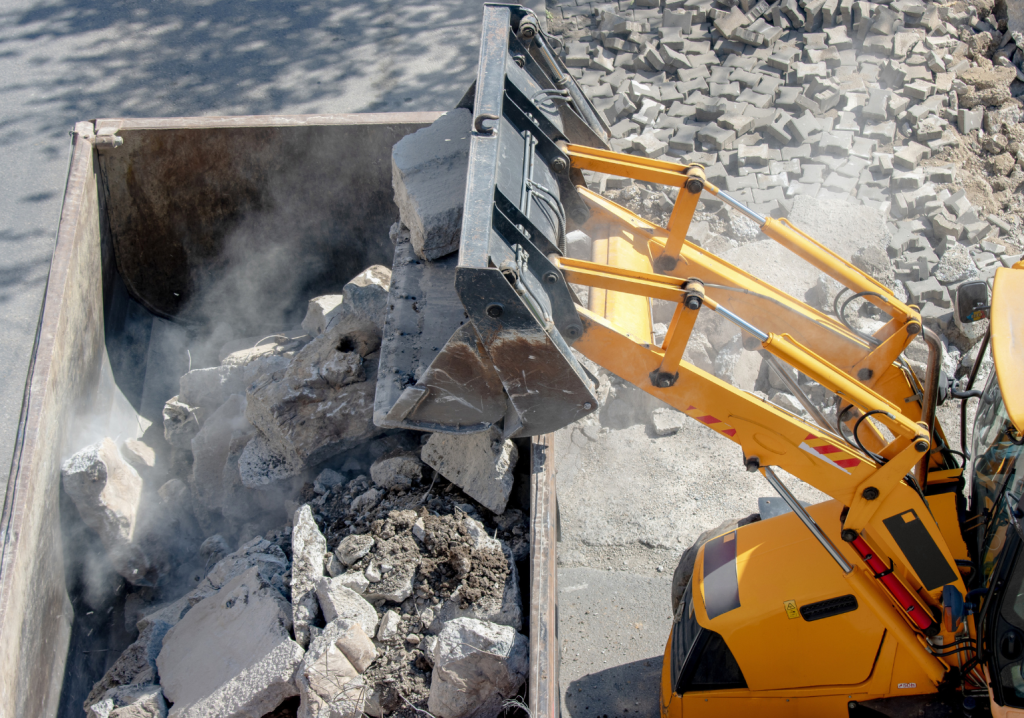Engineers who have gone big with low-carbon concrete walk through the challenges, considerations and lessons learned from embracing new forms of concrete.
Key points:
- Supplementary cementitious materials such as slag, essential in modern concrete, may have a limited future.
- Australia leads the world in geopolymer concrete, but there are regulatory and safety concerns.
- Some companies are already adopting low-carbon concrete in major projects – and reaping the sustainability benefits.
In the fast-changing field of concrete, real change is being engineered at a project level to solve the carbon conundrum.
The biggest and most obvious problem is the lack of definition around what “low-carbon concrete” actually means.
It is vital to understand the two most common types of low-carbon concrete, according to Professor Vute Sirivivatnanon, Research Director at SmartCrete CRC and Professor of Concrete Engineering at the University of Technology Sydney.
“One is basically concrete with supplementary cementitious materials, which also has some Portland cement in it,” Sirivivatnanon explained. “That’s the type of low-carbon concrete that is being used to a large extent right now.”
“The second type is generally called geopolymer concrete. This type basically has zero, or a very low amount of, Portland cement. So, it has much lower embodied carbon than the first one.”
Supplementary cementitious materials (SCMs) such as slag, a byproduct from the smelting of various ores, and fly ash, from the burning of coal in power plants, were first introduced decades ago. They’re essential in today’s low-carbon concrete, and in the geopolymer concrete of the future.
Sirivivatnanon worked with the CSIRO from 1988 until 2006, using SCMs to improve the durability of concrete.
The future of concrete
Today, engineers recognise that cement production causes a large portion – up to eight per cent – of carbon emissions globally. The use of waste material from another sector brings certain circular economy values into play, and more efficient use of Portland cement helps reduce the embodied carbon count.
But what if that waste material comes from a sector that is going through its own sustainability transformation, meaning some of the material will no longer be available?

“The reality is that, as we look towards 2050, SCMs like the fly ash we use today may be extinct if there is no more coal-fired power generation,” Hollie Hynes, General Manager of Environment and Sustainability at Laing O’Rourke Australia, told create.
It’s not the end of the road, however. There are stores of fly ash, also called dam ash when stored in dams, that can be used, according to Hynes.
As steel manufacture is likely to be transformed, slag as the by-product we know today will change.
“We have to do this all over again with the next generations of low carbon concrete,” Hynes explained. “We need really progressive thinking along the whole value chain. Do we leapfrog and start looking at what the future will hold, and just do it now?”
According to a paper on geopolymer cement and concrete, “any waste material containing aluminosilicate mineral such as fly ash, granulated blast furnace slag, rice husk ash, calcined clay … when treated with alkali solutions, give geopolymer cement”.
Australia is a global leader in the geopolymer space, Sirivivatnanon said.
“Dr Kwesi Sagoe-Crentsil started working on geopolymer concretes at the CSIRO in the mid-1990s, and this was followed by a lot of work at many universities,” he said.
“On a worldwide scale, in my opinion, Australia is probably leading in the development of geopolymer concrete.”
If a move away from slag and fly ash becomes necessary, it might lead towards calcined clay, which Dr Rackel San Nicolas, engineer and Senior Lecturer and Academic Leader of the Geopolymer and Minerals Processing Group at the University of Melbourne, said is in plentiful supply in Australia – over 500 years’ worth.
What’s the problem with geopolymer concrete?
There are four main issues with geopolymer concrete that Sirivivatnanon and his colleagues at SmartCrete CRC, and the CRC’s industry and academic partners, are racing to solve:
- Regulation
- Safety
- Early strength and long-term durability performance
- Product propriety
As far as regulation is concerned, Australia is part-way to enabling greater use of geopolymer concrete, he said, particularly since the 2023 release of the technical specifications.
Safety concerns primarily stemmed from the highly alkaline nature of the liquid activator used in some geopolymer formulation. This issue has been resolved by the use of solid activator, and safety protocols for workers.
The third challenge is around our need for certainty about the product’s durability in certain exposure situations. This is important from the design life viewpoint, Sirivivatnanon said.
For above ground structures, durability with respect to carbonation-induced corrosion has been addressed in TS199 with performance-based specifications.
“In sub-structures, in the soil, carbonation is not a problem,” he said. “Instead, it’s the sulfate and acid sulfate in the soil. With respect to geopolymers, [Australia needs] a bit more work.
“But the area that is the weakest is in the area of concrete exposed to marine environments, where there are chloride-induced corrosion issues of the steel reinforcement.”
Until we have certainty in each of these areas, the use of geopolymer concrete, in Australian construction at least, will remain subdued.
Where to from here?
Laing O’Rourke Australia is the first construction company to develop and publish limits on the embodied emissions allowed in the concrete used in projects.
The company made a conscious decision to leave out any specifications about how concrete suppliers should make concrete. Instead, the limits are based on a specified embodied carbon limit for the different strength grades. These limits are expressed in kilograms of carbon dioxide per cubic metre of concrete.
“Concrete is a big area of focus,” chemical engineer Dr Monica Hanus-Smith, Low Carbon Materials Lead at Laing O’Rourke, told create. “Everyone is talking about it. But when we dug into it, there was no definition.
“We wanted to set a target and policy in our own organisation around how we reduce emissions associated with concrete, so we worked with our supply chain and came up with a set of concrete carbon limits.
“We published it so others knew what we were doing, and we welcome them to adopt it … a rising tide lifts all boats.”
In the meantime, low-carbon concrete is being adopted across numerous major projects.
Holcim and the University of Melbourne developed a low-carbon mix that also used processed glass waste instead of sand, for use in Melbourne’s Metro Tunnel project; overall, the project saved a claimed 150,000 t of carbon emissions.
For the famous spaces and spires of Punchbowl mosque in Sydney, a high-fly ash concrete helped reduce carbon output.
And via SmartCrete CRC, Curtin University is collaborating with Main Road Western Australia, CCAA, and Holcim to turn waste concrete into viable coarse aggregate, potentially saving up to 288,000 t of returned concrete from ending up in dumping pits around Australia.
This research, development and innovation in concrete is no longer optional, Hynes said.
“It’s not something that’s siloed to the sustainability team anymore,” she said. “It is in so many conversations and policies.
“As governments begin mandating that carbon needs to be measured and addressed through procurement phases, it means the client has to look at that from concept phase … People are coming to us, rather than us having to go and justify why we need to be heard. Things are changing very quickly.”
For more from create digital, check out the below:
- Winning green concrete formula stands the test of time
- Behind the scenes of the Bruce Highway upgrade project
- Tyres literally make the world go around, so how do we decarbonise?
